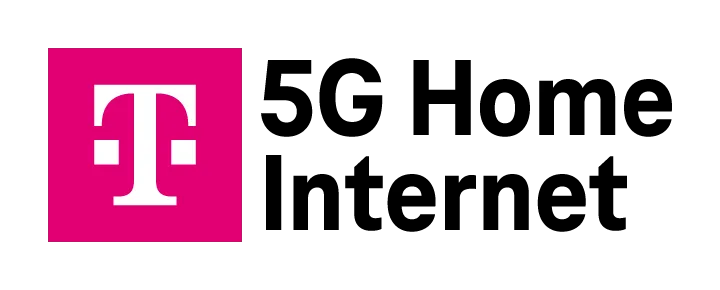Who is the best home internet provider?
Between family video calls, YouTube streaming, and web browsing, home internet is more essential than ever. But what home internet providers offer the best combination of price and performance?
For the second year in a row, we awarded Google Fiber our Best of the Best Award for the top internet service provider (ISP) overall this year. If you can get it at your address, we think you should snap it up. If you can’t get Google Fiber in your area, we also gave top marks to Verizon, Xfinity, and T-Mobile in this year’s guide.
Read on to see our data-rich breakdown of the top ISPs in the U.S.
What to look for in a home internet service
Some internet services have exciting deals and freebies that look super impressive. But when you want the best home internet provider, make sure the bang for your buck, reliability, features, and customer satisfaction ratings meet your standards before you sign a contract.
Bang for your buck
Since there’s no standard for internet pricing, even budget plans can run anywhere from $19.99 to $50.00 per month. (It’s a big range, we know.) Value depends a lot on your providers and location, but we used a few factors to determine which ISP offers the best internet value.
Nearly all of our top internet service providers have no annual price increases. We wish that was the case for every ISP out there, but that’s not yet reality. Other ISPs will hike up the price after a year of service, making your once affordable plan much pricier than what you originally were paying.
We also prioritize providers that are transparent with any extra fees that may be incurred—like, say, potential installation or router rental fees—along with providers that have a simple pricing method with all fees included.
Reliability
Our internet usage is growing all the time, and our bandwidth needs are higher than ever. With that in mind, you need internet that’s consistently fast and stable at your home. As part of our annual Internet Customer Satisfaction Survey series, we talked to thousands of real-life internet customers to see how they felt about their ISPs.
Their feedback on their ISP’s speed and reliability (which refers to how often their internet goes down) played a huge role in our rankings. Two of our five top choices for best ISPs are fiber providers, which deliver more reliability than a cable, satellite, 5G, or DSL internet provider.
Features
Internet service providers are in the business of offering way more than internet these days. We gave the highest marks to ISPs that offered the best catalog of add-ons, which can include a number of options.
Bundle choices were a huge plus in our eyes, as many offer services ranging from TV service to cheaper cell phone plans. We didn’t talk about data caps much in this article because most of our top recommendations offer unlimited data.
We also favored ISPs that offered free equipment options. Most ISPs will give you the option to rent your equipment for a monthly fee or potentially buy it outright upfront. Even better, some providers, like Google Fiber and T-Mobile 5G Home Internet, won’t charge you at all. If equipment isn’t free, we suggest buying your wireless router instead of renting one since you’ll save on monthly rental fees.
Customer satisfaction
Customer service: Customer service takes into account how efficiently ISPs get their customers the help they need. Some providers have their customer service desks staffed 24/7, while some process all requests through support pages and emails. Some ISPs are national chains with stores across the country to drop into, while others are largely online affairs.
Regardless of how they solve customers’ problems, we prioritize how consistently and efficiently they do so, and our top picks all scored high marks on our survey.
Compare America’s best home internet services at a glance
Our top ISPs differ heavily on the fine print, as some providers run cables through your neighborhood while others utilize wireless towers to deliver internet service to your home. But regardless of the technology, all five of our best ISPs provide internet service that’s fast, reliable, and a great value.
Best internet providers in the U.S.
| Internet provider | Price | Max download speed | Data cap | Details |
|---|---|---|---|---|
| AT&T Fiber | $55.00–$155.00/mo. | 100–5,000 Mbps | Unlimited |
|
|
Google Fiber Best of the Best |
$70.00–$150.00/mo. | 1,000–8,000 Mbps | Unlimited |
|
| Quantum Fiber | $45.00–$165.00/mo. | 200–8,000 Mbps | Unlimited |
|
|
T-Mobile 5G Home Internet Best Bang for Your Buck |
$35.00–$70.00/mo.** | 170-498 Mbps | Unlimited |
|
|
Verizon Fios Best of the Best for Reliability |
$49.99–$109.99/mo. (w/ Auto Pay)* | 300–2,300 Mbps | Unlimited |
|
|
Verizon 5G Home Internet Best of the Best for 5G |
$35.00–$75.00/mo. | 85–1,000 Mbps | Unlimited | View plans |
|
Xfinity Best of the Best for Cable |
$40.00–$100.00/mo. | 300–2,000 Mbps | Unlimited | View plan |
Data effective as of December 19, 2025. Offers and availability may vary by location and are subject to change.
*Price per month with Auto Pay & without select 5G mobile plans. Consumer data usage is subject to the usage restrictions set forth in Verizon’s terms of service; visit: https://www.verizon.com/support/customer-agreement/ for more information about 5G Home Internet or https://www.verizon.com/about/terms-conditions/verizon-customer-agreement for Fios internet.
**$35.00/mo. with Autopay and a T-Mobile voice line. 5 year price guarantee. w/AutoPay. Guarantee exclusions like taxes and fees apply.
Best of the Best: Google Fiber
Price: $70.00–$150.00/mo. | Max download speeds: 1,000–8,000 Mbps | Data cap: Unlimited
Pros: Fast fiber internet; no annual price increases; few if any outages; best Wi-Fi router/modem offers
Cons: Limited availability
Google Fiber earned our Best of the Best Award because it dominates the competition across the board. To start with, Google Fiber landed in the top three overall on our annual customer satisfaction survey of over 8,000 real customers for the second year running.
Plus, Google Fiber offers excellent speeds of up to 8 Gbps and stellar performance. An impressive 85% of CableTV.com survey respondents were extremely satisfied with Google Fiber’s speeds (tied for the highest ranking), and 83% of respondents were equally satisfied with Google Fiber’s service reliability. If you’re looking for high-performance fiber internet service, Google Fiber will deliver, and it won’t go down.
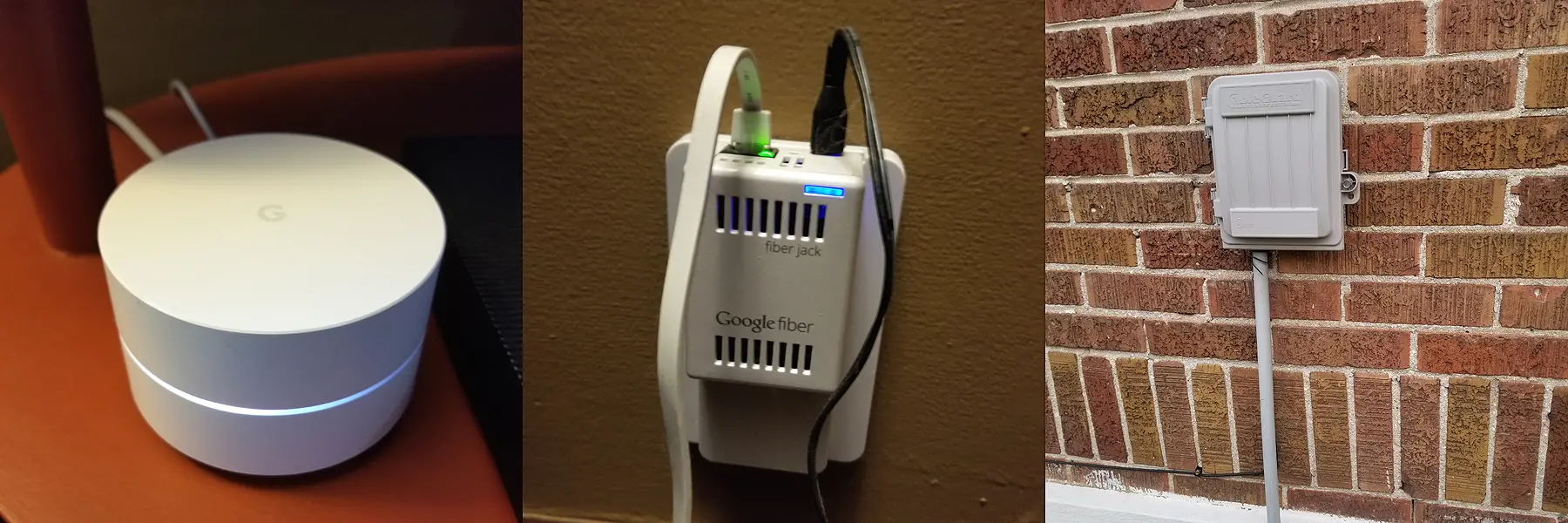
With Google Fiber, you’ll also get add-ons like a free modem/router, free Google Drive storage space, flat-rate pricing, and no annual price increases. As our internet price investigation showed, Google hasn’t raised the price on its 1 Gbps plan since 2021.
Google Fiber might not have the best reach—at the moment, it’s available in less than 30 U.S. cities—but when it’s available, it’s impressive. (Two of us on the editorial staff here at CableTV.com have Google Fiber; it performs way better than our previous ISPs.) In this year’s J.D. Power ISP Satisfaction Survey, Google Fiber also blew out competitors in the South region by a whopping 120-point margin.
What do real customers think about Google Fiber?
“Google Fiber has been consistent with my Internet service. They help me address any IT issues related to my Internet. The customer service representatives go out of their way to help address any questions, concerns or problems you may have with your Internet.”
Fiber internet will always be faster and more reliable than the competition (read our fiber internet guide to find out why). With just a few straightforward plans, Google makes it easy to access high speeds immediately. And those are just some of the reasons why we love Google Fiber.
To find out more and to see if Google Fiber is in your area, read our comprehensive review.
Bang for Your Buck: T-Mobile 5G Home Internet
Price: $35.00–$70.00/mo. | Max download speeds: 170-498 Mbps | Data cap: Unlimited
Pros: $10–$20/mo. bundle discount; no annual price increases; wide availability
Cons: Slower download and upload speeds; less reliable service
T-Mobile 5G Home Internet is a great deal for most people because it cuts the bloat and provides solid internet service at a great price. T-Mobile 5G Home Internet starts at $50 per month with its Rely plan, and if you bundle a T-Mobile phone plan, you can drop your bill down to only $35 monthly, which is miles ahead of competing cable and fiber ISPs.
Best of all, T-Mobile’s flat-rate pricing means you’ll always pay the same price for internet service. You won’t have to deal with cable ISP tricks like second-year price increases or service contracts.
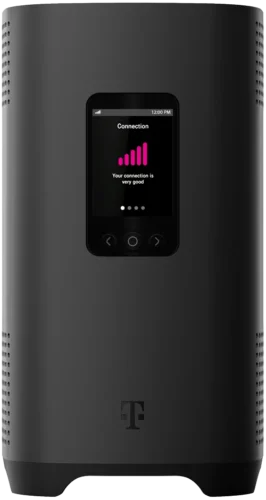
What do real customers think about T-Mobile?
“It’s good but where I live it's hard to find a strong signal. So sometimes, my stuff has to load up before it lets me watch anything and that can be annoying but the price was nicer than my old provider.”
Your dollar will also go further on T-Mobile than on Verizon. T-Mobile will give you a bundle discount with any postpaid phone plan, while Verizon relegates its bundle discount to its pricier 5G phone plans. Respondents in CableTV.com’s annual customer survey also agreed, as 79% of T-Mobile customers approved of their prices versus only 72% of Verizon’s customers.
We think T-Mobile internet speeds are fast enough for most home use. With speeds up to 498 Mbps, you’ll usually have enough bandwidth for Netflix nights, TikTok swiping, and everything in between. You’ll get spectacular bang for your buck if T-Mobile 5G Home Internet is available in your area.
That said, because T-Mobile 5G Home Internet relies on a cell phone network, you may experience inconsistent download and upload speeds and more frequent outages than you would with a cable or fiber internet provider. The value is there, but it does come with some tradeoffs.
Check out our comprehensive T-Mobile 5G Home Internet review to learn more about the service.
Best of the Best for Reliability: Verizon Fios
Price: $49.99–$109.99/mo. | Max download speeds: 300–2,300 Mbps | Data cap: Unlimited
Pros: Reliably fast internet speeds; high customer satisfaction; flexible contracts
Cons: Only available on the East Coast; pricier plans
Verizon Fios has long been one of our top fiber ISPs thanks to its fast internet connection and flexible pricing. But if that wasn’t enough, we now also consider Verizon Fios the most reliable home internet provider in the U.S.
According to raw speed test data from our partners at HighSpeedInternet.com, Verizon Fios received the best latency marks, with an average mark of only 9.4 milliseconds. In CableTV.com’s survey, Verizon Fios also boasted the second-best download speed and reliability satisfaction ratings among fiber and cable ISPs in the U.S. Long story short, Verizon Fios is road-tested fast and remarkably reliable.
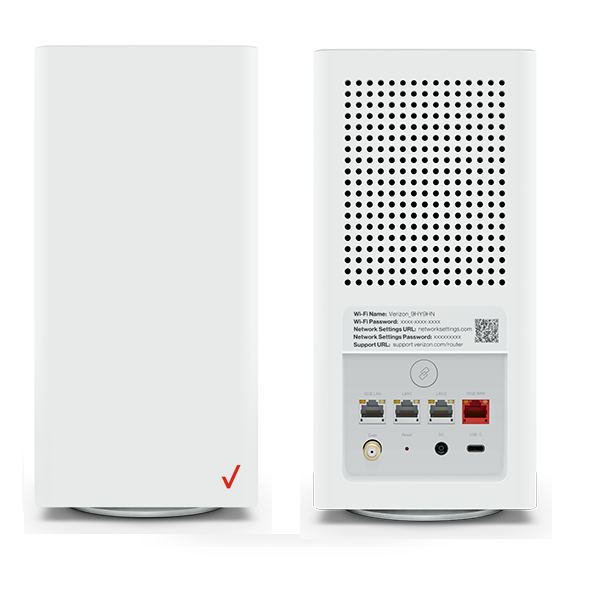
What do real customers think about Verizon Fios?
“Verizon Fios offers high-quality service and has a great network. The price is reasonable for the quality of the service offered.”
We aren’t the only site that loves Verizon Fios, either. Verizon Fios took first place in J.D. Power’s 2024 Internet Provider Satisfaction Study for the East Coast region, beating out competitors like Xfinity, Cox, and Spectrum.
TBH, there’s a lot to love about Verizon Fios, and Google Fiber barely nudged it out of the top spot this year because of its higher customer satisfaction and simple plan structure. It may be second in our books, but Verizon Fios is better than 99% of America’s internet providers.
Visit our full Verizon Fios review to see why we named it as one of our top fiber ISPs for 2025.
Best of the Best for Cable: Xfinity
Price: $40.00–$100.00/mo. | Max download speeds: 300–2,000 Mbps | Data cap: Unlimited
Pros: Cheap internet plans; good internet speeds; optional no-contract plans
Cons: No budget internet plans; price hikes; overpriced equipment
These days, we’d understand if getting cable internet feels like settling for third place, especially considering the speed of fiber internet or the flexibility of 5G home internet. But Xfinity earned its spot on this year’s top ISP list thanks to some big gains.
For starters, Xfinity won best-in-class honors among cable ISPs in our 2025 Internet Customer Satisfaction Survey:
- 81% of surveyed Xfinity customers were fully or highly satisfied with Xfinity’s internet speeds.
- 77% of respondents approved of Xfinity’s internet reliability.
- 80% of respondents were fully or very satisfied with their Xfinity internet service.
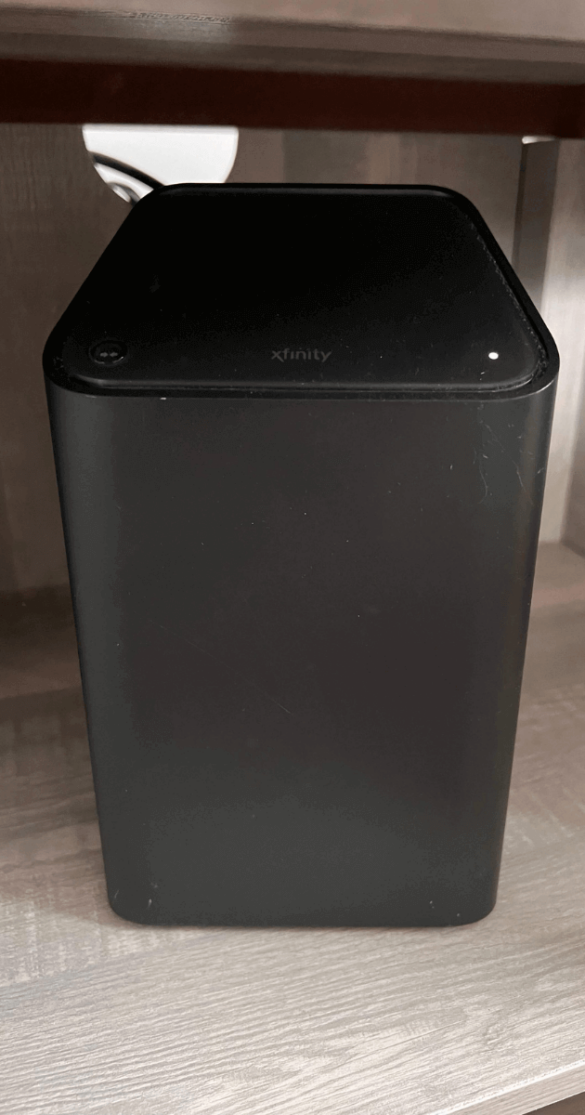
Additionally, Xfinity Mobile was our pick for the best ISP cell phone service and the top ISP cell phone plan according to our annual customer satisfaction survey. What’s more, Xfinity’s TV plans landed in our best cable TV provider rankings. Xfinity’s internet plan catalog covers every budget range, and you’ll be equally set if you’re looking to bundle TV or mobile phone service.
Of course, cable ISPs and Xfinity aren’t without downsides such as their 12-month rate hikes and average customer service. But if you have to settle for cable internet in your area, Xfinity’s made huge strides as an ISP.
Read our full Xfinity internet review to see why it earned its spot as our favorite cable ISP.
What do real customers think about Xfinity?
“We have been a customer for 10 years and have virtually no problems with them. They are very responsive to any questions we may have.”
Best of the Best for 5G: Verizon 5G Home Internet
Price: $35.00–$75.00/mo. | Max download speeds: 85–1,000 Mbps | Data cap: Unlimited
Pros: No annual contracts; faster performance; equipment included in cost
Cons: Download speeds vary (usually from 300–up to 1,000 Mbps); availability is limited; slightly pricey
5G home internet is the biggest new entrant in the ISP space in recent years, and Verizon 5G Home Internet’s high-end performance helped the service earn our Best of the Best Award for 5G.
Unlike cable and fiber ISPs, 5G internet providers like Verizon use the carrier’s wireless 5G towers to connect your home to the internet. But this wasn’t a problem according to Verizon 5G Home Internet customers, as more than 84% of CableTV.com survey respondents were highly satisfied with Verizon’s speed and reliability.
Similarly, a whopping 86% of polled Verizon customers were fully or highly satisfied with their 5G home internet service. Both marks blew away T-Mobile 5G Home Internet by nearly 10%, and Verizon 5G also had a lower average latency (34.4 milliseconds) compared to T-Mobile (40.7 milliseconds), according to speed test data from our partners at HighSpeedInternet.com.

What do real customers think about Verizon 5G Home Internet?
“The best [and they’re] great. Service always is a pleasure and easy, affordable with no interruptions unlike other… companies. Verizon rules.”
Verizon 5G Home Internet’s two plans offer solid download speeds for most households, and you’ll get standard 5G home internet benefits like bundled equipment, unlimited data, and no price hikes. At the same time, Verizon 5G Home Internet comes with the usual caveats for a 5G home internet service: It’s only available in certain areas, and real-world download speeds vary. Plus, in this case, Verizon 5G Home Internet has less flexible discounts compared to T-Mobile 5G Home Internet.
But if you’re in an area with Verizon 5G Home Internet coverage and looking to switch internet providers, it’s hard to beat Verizon’s high-end performance. T-Mobile offers slightly better value, but Verizon 5G’s network performs better.
Check out our Verizon 5G Home Internet review for a full breakdown of its specs, speeds, and more.
Honorable mentions: Other top home internet services
AT&T Fiber
Price: $55.00–$155.00/mo. | Max download speeds: 100–5,000 Mbps | Data cap: Unlimited
AT&T’s slightly higher prices kept it right outside of our picks for 2025’s best ISPs, but it has one thing that many national providers don’t: common-sense internet pricing.
We like that every AT&T Fiber plan includes no tricks like price increases after 12 months, restrictive contracts, or early termination fees. AT&T internet is contract-free, so you can get internet on your terms when and how you want it.
AT&T Fiber was also no slouch when it came to performance in our customer satisfaction survey. AT&T Fiber ranked second in overall satisfaction among our top ISPs with an 84% approval rating and broke the 80% approval mark for internet speed and reliability satisfaction.
What do real customers think about AT&T?
“While there are cheaper options, I'm satisfied with the price because since I work from home, it's important to have fast internet speeds, and I feel like AT&T delivers on that. AT&T has probably been the best provider in my area for reliability. The one time we had an outage so far, it only lasted about an hour. I've had experiences with other providers in Miami where there were outages almost once a month and lasting several hours.”
AT&T’s fiber availability remains a work in progress, but in areas without fiber, you may be able to get AT&T Internet Air for budget-friendly 5G internet service.
Dollars to donuts, though, we think that no-contract AT&T fiber internet is worth the price.
Quantum Fiber
Price: $45.00–$165.00/mo. | Max download speeds: 200–8,000 Mbps | Data cap: Unlimited
Quantum Fiber requires a little bit of explanation because it used to go by a different name: CenturyLink. (Parent company Lumen is gradually migrating CenturyLink fiber customers over to Quantum, but both companies still offer fiber service.)
Quantum Fiber fell out of our top provider spots because of some small dips in its customer satisfaction survey rankings—its customer support and price satisfaction scores fell below the 80% approval mark, and it doesn’t offer the number of bundle options you’d find on larger ISPs.
But Quantum Fiber’s network remains among the best around, as 88% of CableTV.com respondents were extremely satisfied with Quantum’s internet speeds—this ranked first overall among fiber ISPs. According to Quantum’s Broadband Facts labels, you’ll typically get latency times of less than five milliseconds, which is phenomenal for gamers or streamers who need a reliable internet connection.
"Wow! If you ask for an install, they will come even before the time of the stated arrival. They will not oversell and tell you exactly what you need. They were $25/month [less] than Century Link and will never raise my $50/month fee. The internet speed is great. The installers are polite and will answer any questions that you need answered."
All four Quantum Fiber internet plans also come with unlimited data, no contracts, and a Price for Life guarantee. In other words, only the best of what CenturyLink used to offer.
Quantum Fiber’s availability can be a bit of an issue because the ISP is only available in 16 states. That said, if you can find Quantum Fiber near you, you won’t be disappointed, and we recommend you give them a look.
Best home internet services FAQ
What type of internet is best for my home?
We recommend fiber internet if it’s available in your area because it offers the best combination of performance and price for a home internet plan. Otherwise, we recommend looking for 5G or cable internet providers, depending on your household’s needs. Cable internet offers faster download speeds than 5G, but 5G providers are more affordable.
Who is the best internet provider?
Google Fiber is our pick for the top internet provider thanks to its fast internet plans and high customer satisfaction scores. Among other national and regional ISPs, our other picks for the best internet providers include Verizon, T-Mobile, and Xfinity.
Who has the fastest home internet?
Ziply Fiber, Verizon Fios, and Quantum Fiber are our picks for the fastest home internet providers. They offer a mix of best-in-class fiber speeds and low latency.
How much should home internet cost?
The average internet plan should cost around $50 per month. Budget internet plans will typically cost around $30 to $40 monthly, while premium gigabit internet plans fall within the $70 range.
Why you should trust us
To find this year’s best internet providers, we spent thousands of hours analyzing each ISP’s plans based on factors including price, reliability, and features like a free modem/router.
We also relied on our annual internet customer satisfaction survey to find out how current customers felt about their ISPs. Not only that, but we did hands-on testing of our own home internet to round out our ratings of select providers.
For more information on our methodology, check out our How We Rank page. Like the way we roll? Return to our list of the best ISPs in your area.

